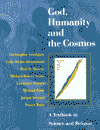Science and Divine ActionWe introduce the question of how God might be thought to act in the world science describes by considering how the great Newton would have thought of God’s action. After An Introduction to Divine Action: Isaac Newton’s God we show how this thinking could lead to a God of the gaps model. Crucial to many modern attempts to discuss providence is a sense that God works with the interplay between law and chance. We list different types of attempt in A classification of theories of divine action. This leads to a discussion of ‘the causal joint’ - how precisely do God’s purposes intersect with the causal chains we recognise from the world of science? In order to look deeper into the issues raised by some of the most promising models we next consider Peacocke and Polkinghorne compared. Part of the comparison concerns the question of miracle and the all-important issue for Christians of the resurrection of Jesus. Resources: Of
the voluminous literature on the subject we particularly recommend Keith Ward’s
1990 study Divine Action. For reasons of space we confine this
discussion to the Christian tradition, but the reader is invited to reflect on
the shape the discussion of divine action might have taken in respect of other
religions.
Email
link | Feedback | Contributed by: Dr.
Christopher Southgate |




